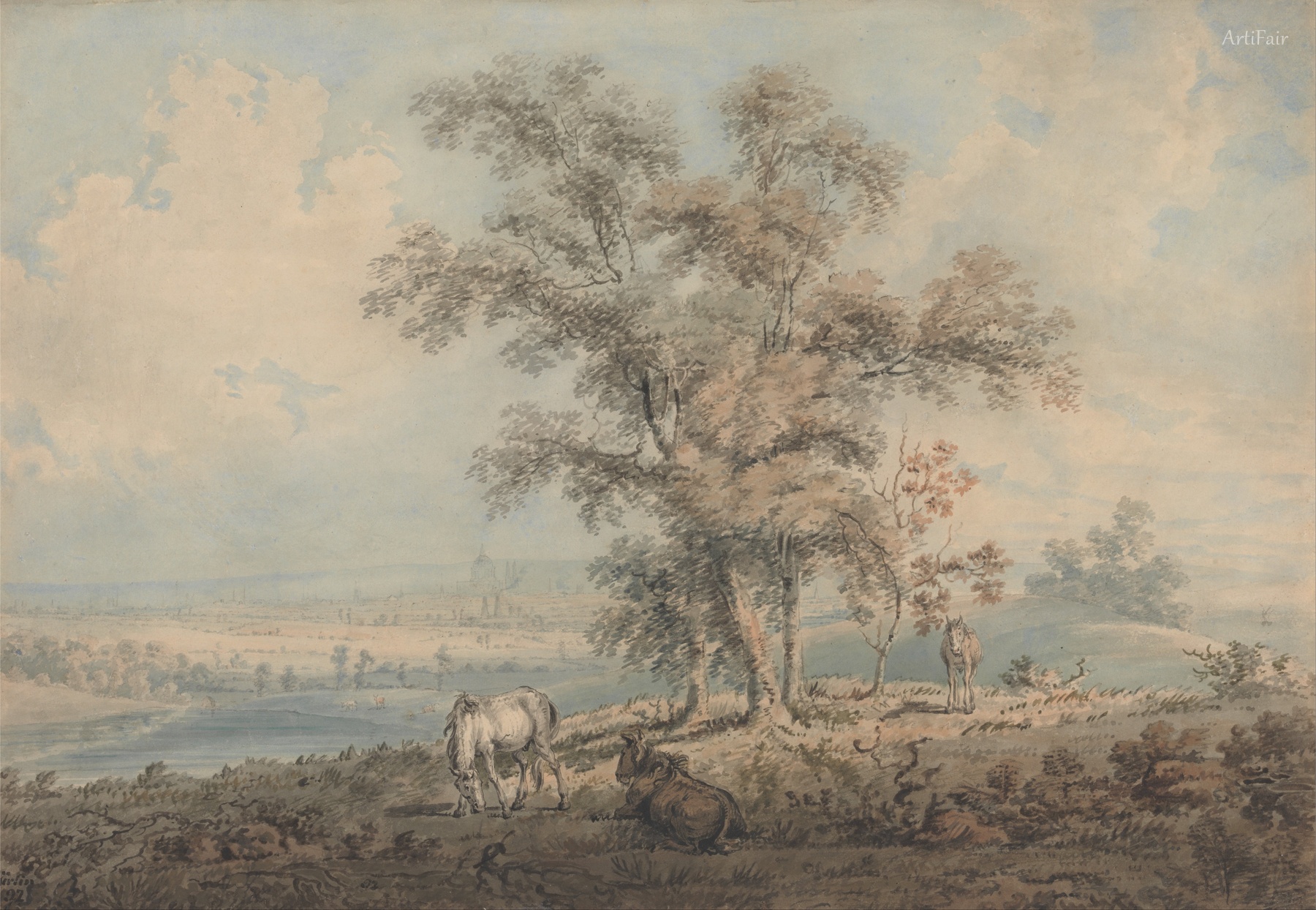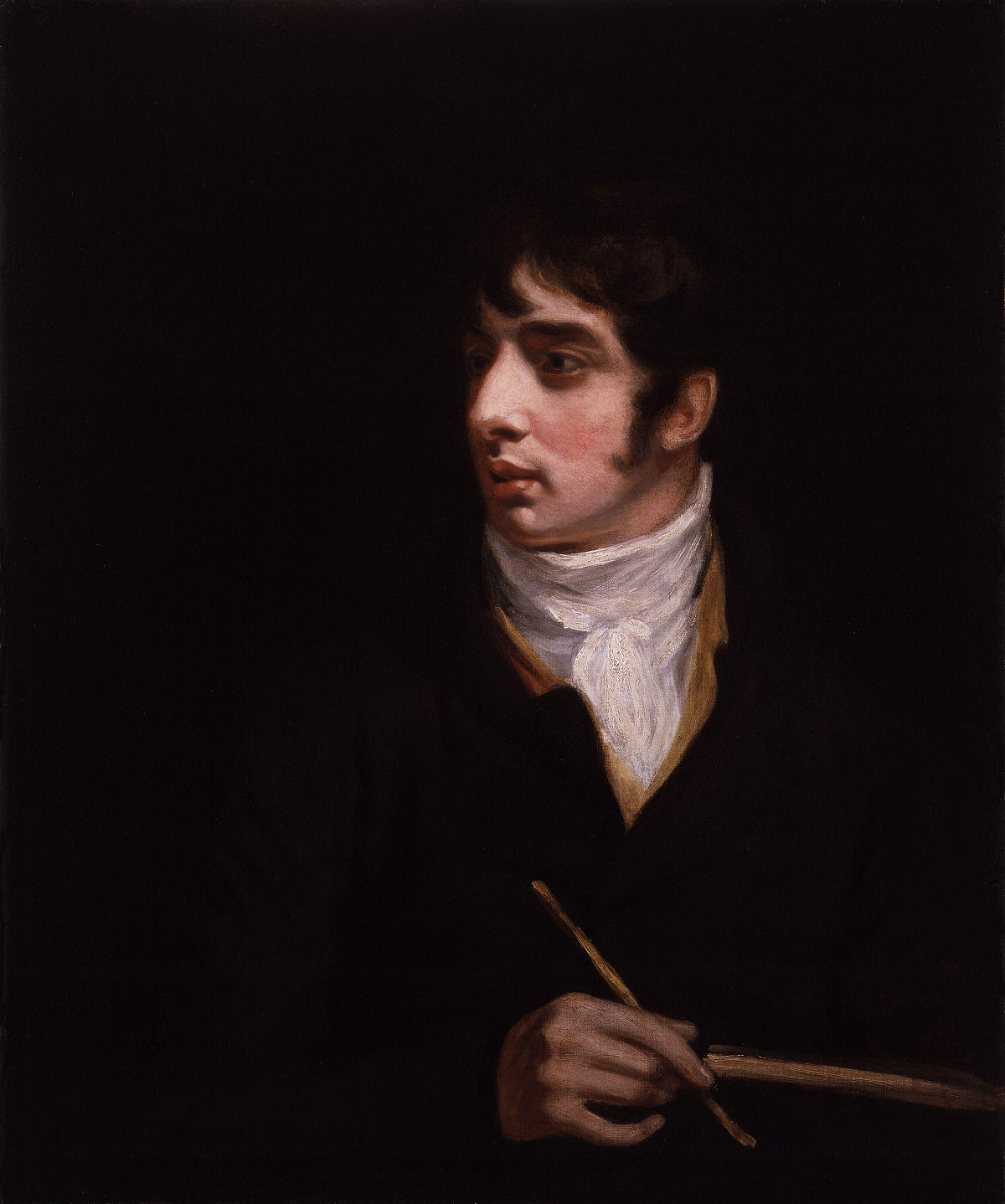

Thomas Girtin
GB
41
Artworks
1775 - 1802
Lifespan
Artist Biography
Thomas Girtin (1775–1802) was a pivotal English watercolourist and etcher whose brief but brilliant career significantly elevated the status of watercolour painting. A contemporary, friend, and rival of the celebrated J.M.W. Turner, Girtin's innovations in technique and vision played a crucial role in transforming watercolour from a minor art form, primarily used for tinting topographical drawings, into a powerful medium capable of expressive, atmospheric landscapes. His early death at the age of twenty-seven cut short a career of immense promise, yet his influence on the course of British art, particularly landscape painting, remains profound.
Born in Southwark, London, on February 18, 1775, Thomas Girtin was the son of a prosperous brushmaker of Huguenot descent. His father died when he was young. Girtin's artistic inclinations emerged early, and he received initial drawing lessons before being apprenticed to the topographical watercolourist Edward Dayes around 1789. Though reports of a difficult apprenticeship exist, it is clear Dayes did not fully appreciate his pupil's burgeoning talent. During his teenage years, Girtin formed a close friendship with J.M.W. Turner. The two young artists were often employed together to colour prints and collaborated on copying works for Dr. Thomas Monro, an important early patron. Girtin began exhibiting at the Royal Academy in 1794, showcasing his skill in architectural and topographical subjects.
Girtin's early works followed the 18th-century topographical style, but he soon developed a bolder, more spacious, and Romantic approach to landscape. He embarked on numerous sketching tours across Britain, including the north of England, North Wales, and the West Country, which provided rich material for his art. These journeys inspired a new watercolour palette, characterized by warm browns, slate greys, indigos, and purples. He gained influential patrons like Lady Sutherland and Sir George Beaumont and was a leading member of "The Brothers," a sketching society. By 1799, his reputation was established. His innovative use of broad washes of strong colour, abandoning the traditional method of undershadowing in grey wash, marked a significant technical advancement. "The White House at Chelsea" (1800) is one of his most celebrated works, admired for its atmospheric depth.
In 1800, Girtin married Mary Ann Borrett. His health, however, began to deteriorate. In late 1801, he spent five and a half months in Paris. During this period, he created watercolours and pencil sketches later published posthumously as "Twenty Views in Paris and its Environs." Upon his return to London in 1802, despite his failing health, Girtin embarked on an ambitious project: the "Eidometropolis," a vast 360-degree panorama of London. Measuring 18 feet high and 108 feet in circumference, it was exhibited to public acclaim, noted for its naturalistic depiction of urban light and atmosphere. This endeavor reflected Girtin's desire to reach a wider audience beyond traditional patronage. Tragically, Thomas Girtin died on November 9, 1802, in his painting room, at the young age of twenty-seven, likely from asthma or consumption.
Girtin's artistic style was revolutionary. He moved from precise topographical renderings towards a more evocative interpretation of landscape. His technique involved broad, fluid washes of transparent watercolour, allowing the paper's white to contribute to luminosity. He experimented with pen, brown ink, and varnish for richer tones. This departure from meticulous detail in favour of capturing mood, light, and atmospheric effects was central to the burgeoning Romantic movement. His technical innovations, such as direct application of colour without grey monochrome underpainting, were instrumental in establishing watercolour as an independent, expressive medium. J.M.W. Turner famously remarked, "Had Tom Girtin lived I should have starved," a testament to Girtin's immense talent. Though his career was short, Thomas Girtin's contribution to British art was transformative, paving the way for future watercolourists and landscape painters.